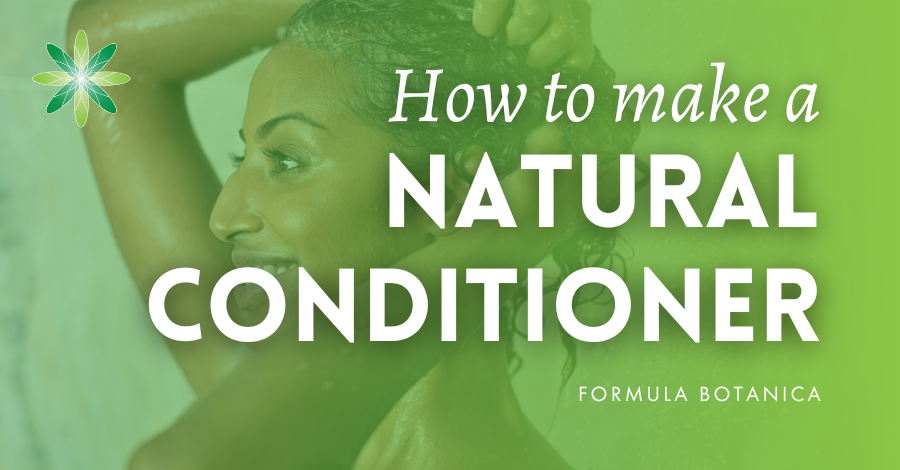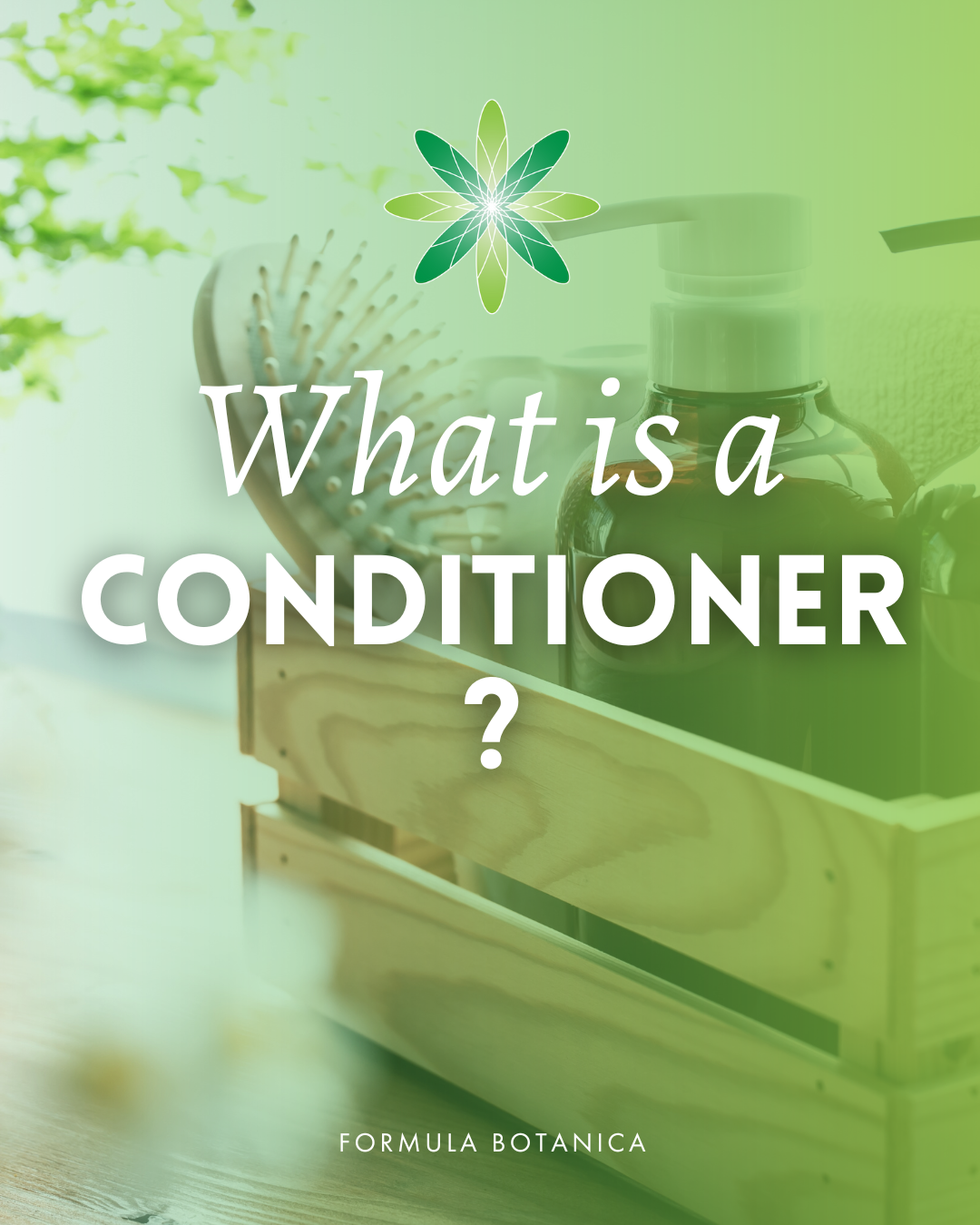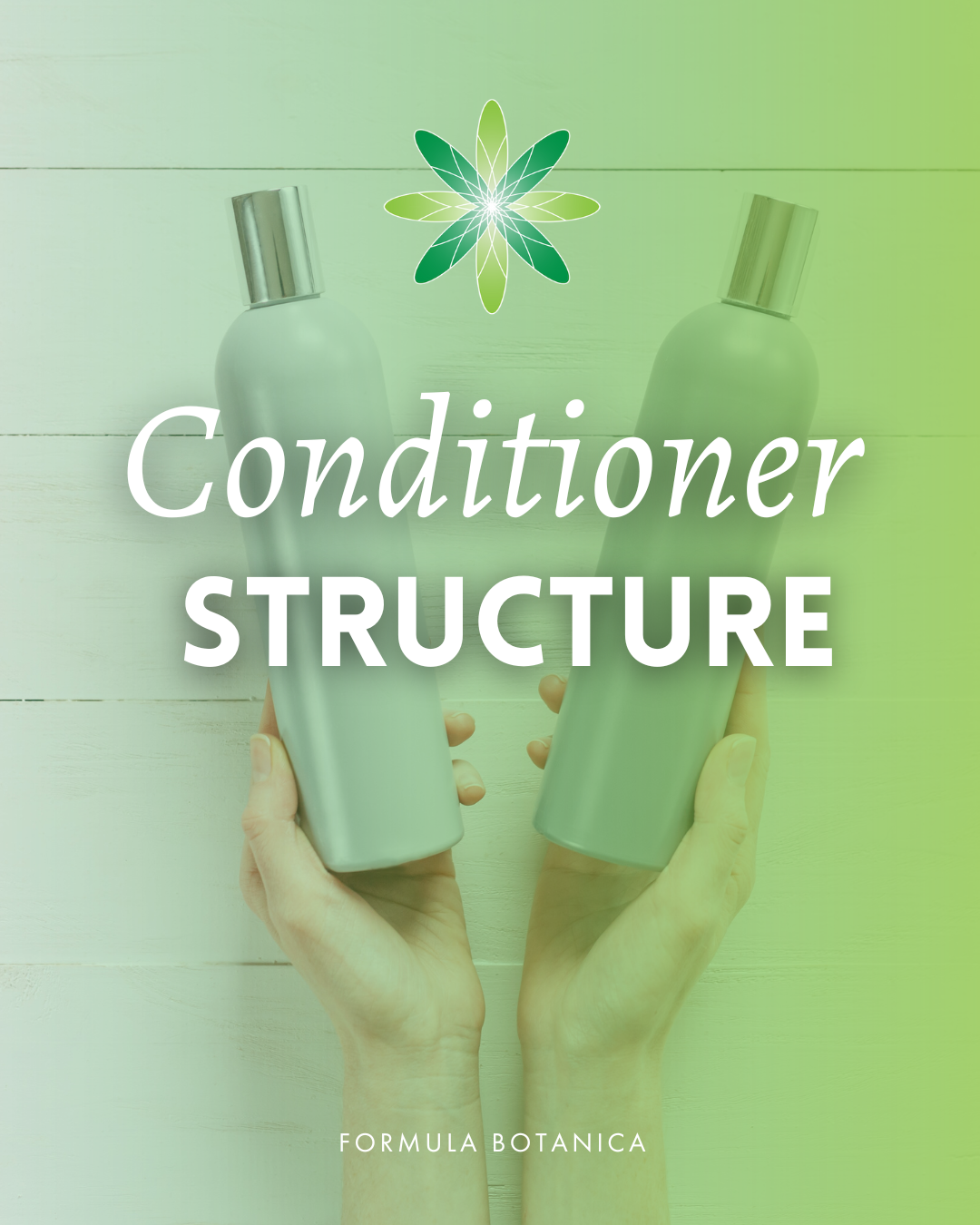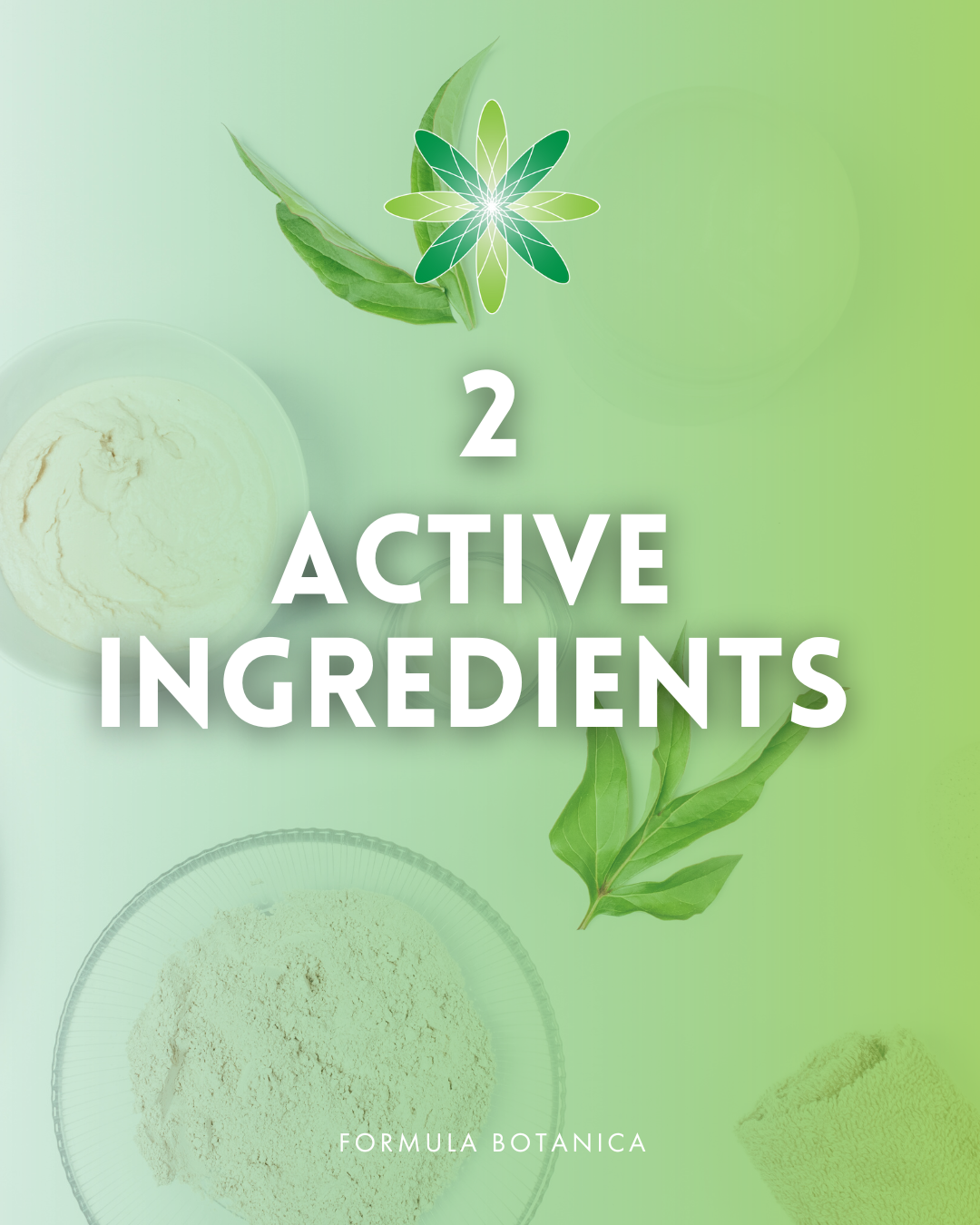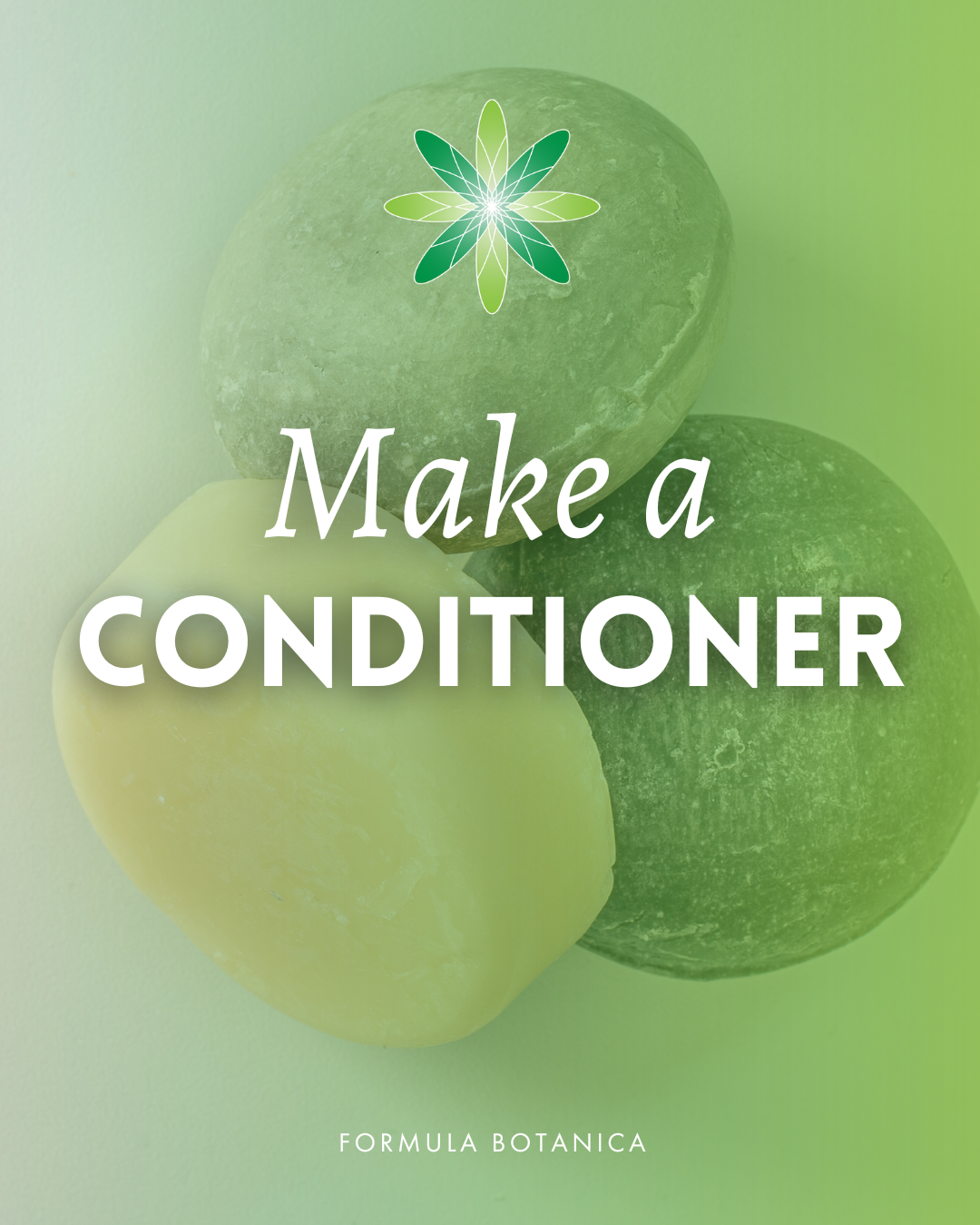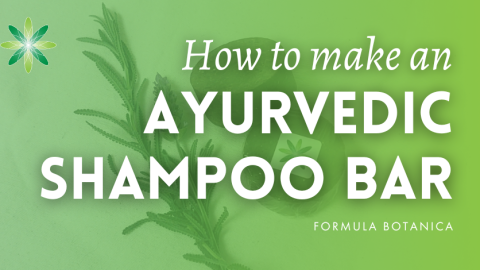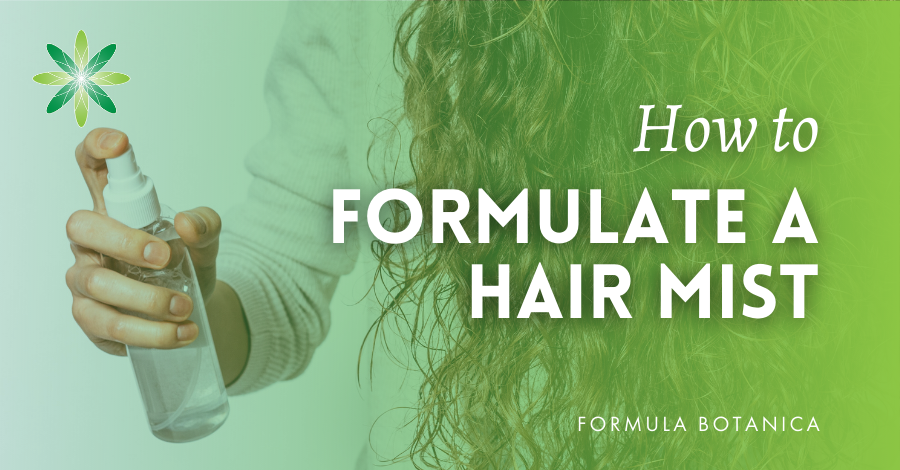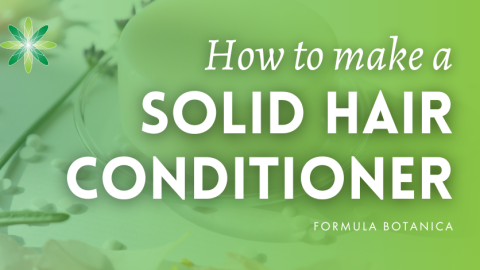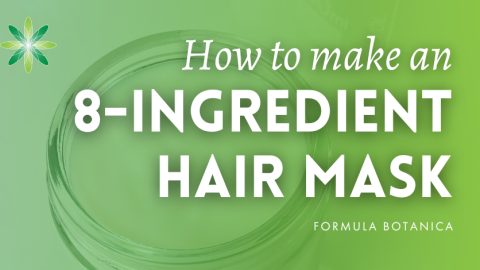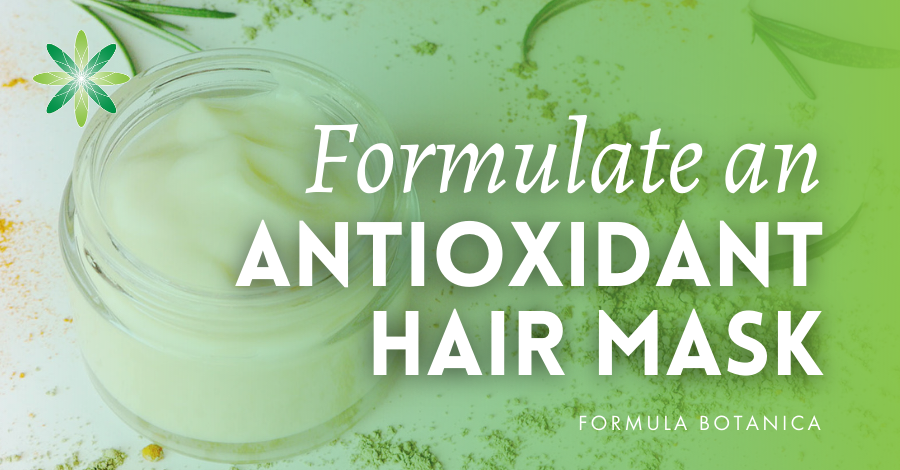Updated: 22.07.25
Want to make your own natural and organic hair conditioner but not sure where to start? You’ve come to the right place.
At Formula Botanica, we’ve taught tens of thousands of students how to formulate natural and organic skincare and haircare through our award-winning courses and educational blog.
We’re not like the countless DIY blogs offering questionable recipes. Instead, we teach the science behind safe and effective formulations, so you can go beyond kitchen experiments and start making professional-quality products you’re proud of.
In this post, we’ll walk you through how a natural and organic hair conditioner is structured, giving you the knowledge you need to begin formulating with confidence.
What is a conditioner?
When you begin your journey as an organic haircare formulator, you’ll quickly realise that there’s no single, standard formula for creating a hair conditioner, especially a natural and organic one. A quick online search reveals endless homemade ‘recipes,’ but few offer real insight into what makes a conditioner safe and effective.
So, what exactly is a conditioner?
Interestingly, there’s no universal definition. While the mainstream cosmetics industry often defines conditioners as emulsions containing cationic surfactants (conditioning ingredients that have a positive charge), this is just one approach. In reality, conditioners can take many forms and use a wide range of functional ingredients.
At Formula Botanica, we identify 14 different types of hair conditioners in our Diploma in Organic Haircare Formulation – and we believe that’s just the beginning.
Conditioners can be oil-based, emulsion-based, gel-based, water-based, or butter-based, and can be rinse-off or leave-in… Some include cationic surfactants, others do not. Some conditioners will deliver a positive charge to the hair, others will contain lipids, anti-static or moisturising ingredients.
Want to learn more about how to make natural haircare? Check out this useful post:
The structure of a natural conditioner
With no clear definition of what a conditioner is, how do you go about making a natural and organic one?
To help you move beyond basic DIY recipes, we’ve broken down the key components of a well-formulated natural conditioner. This overview will hopefully give you a clearer understanding of how these products work, and how you can start formulating your own safe, effective, natural hair conditioners.
1. The conditioning base
A traditional conditioner consists of an oil-in-water (O/W) emulsion, which is a dispersion of oil droplets in a water base. If you’d like to learn how to make an emulsion, check out our Diploma in Organic Skincare Formulation.
Because a traditional conditioner is typically used as a rinse-off product, the water phase will consist of distilled water or a water-based botanical ingredient. The oil phase will generally not be greater than 10% of the final formulation.
In cosmetic formulation, ingredients are grouped into phases based on how they behave and how they need to be mixed. In the case of an emulsion (a cream-based product, like a conditioner), the water phase includes water-soluble ingredients – such as distilled water or water-based extracts – and forms the base of your formulation. The oil phase contains your oils, butters, and emulsifiers and forms the other half of your formulation.
The base of a typical rinse-off conditioner formulation also includes something called a cationic surfactant. This is just a term for a conditioning ingredient that has a positive charge. Because your hair has a slightly negative charge, the two are naturally attracted to each other, like magnets.
This helps the conditioner stick to your hair, coating each strand. As a result, it smooths the hair, reduces frizz and static, and makes it softer and easier to comb.
2. Active ingredients
A natural and organic conditioner is never ‘just’ an emulsion with a cationic surfactant – it will also contain ingredients to help moisturise and make the hair easier to comb.
Some examples of active ingredients include:
Proteins
Proteins in conventional hair conditioners are broken down into smaller components, such as peptides and amino acids, which attach themselves to the hair strand and help smooth the cuticle. This process strengthens the hair strand and repairs existing damage.
Similar to cationic surfactants, proteins are washed out of the hair when you next use a shampoo or cleansing product. They do not permanently attach themselves to the hair strand.
Moisturising ingredients – Humectants
Many conditioners contain humectants whose purpose is to attract moisture. Examples of organic ingredients include panthenol, glycerin, and hyaluronic acid.
These ingredients are not very effective in (fast) rinse-off products because they are not in contact with the hair strand for long enough to have a lasting effect. However, in a leave-in conditioner, they can help to moisturise the hair strand and provide an overall nourishing effect to the conditioner.
Botanical extracts
There are several botanical extracts which are thought to strengthen hair growth by stimulating the skin of the scalp.
Although scientific information on the effects of such botanical extracts is limited, they have been used for millennia to aid the lustre, colour and growth of the hair. Examples include Indian gooseberry, eucalyptus, and guarana.
Curious about haircare extracts? Then check out this post:
3. Functional ingredients
Finally, when you make a homemade hair conditioner instead of buying one, you will want it to be more than just a blend of water and surfactants, as this would be a rather low viscosity blend that isn’t easy to apply to the hair.
You will also want your conditioner to look nice, smell nice and feel nice to the touch. That’s why we use functional ingredients to perfect the overall conditioner formulation. Examples of functional ingredients include:
Emulsifiers and thickeners
Thickeners are ingredients that give structure and increase the viscosity of your conditioner emulsion. After all, if your conditioner was very runny, then it would be very challenging to apply.
Colourants
Mainstream hair conditioners often look white and glossy because standard conditioners usually contain a base of cetearyl alcohol and a cationic surfactant. While this gives conditioners a nice, sleek uniform look, they can lack inspiration and creativity.
Organic formulators, on the other hand, do not subscribe to these limits, as you can see in this post:
If you want to add colour to your organic conditioners (and we recommend you do!), try adding some natural colourants, such as these ones:
Fragrances
In organic conditioners, we typically use essential oils to provide scent and also to fragrance the hair.
As conventional conditioners are generally rinse-off products, the amount of essential oil you use in a conditioner formulation will generally not exceed 1%. Remember to always refer to your supplier’s safety data sheets (SDS) and comply with dermal limits.
Stabilising agents
Finally, any conditioner formulation should, of course, contain stabilising agents to ensure that the formulation remains safe, stable and sellable for the duration of its shelf life.
Examples include pH modifiers, chelating agents and preservatives. You can learn more about these ingredients below:
Everything you wanted to know about natural preservatives
5 reasons why your natural formulations need preserving
16-point checklist: Choosing a natural preservative for skincare
What can go wrong if you don’t control your formulation’s pH?
Bonus: Make your own natural conditioner
We hope you found this post helpful! To help you take the next step, we’ve put together a special bonus just for you: two free natural conditioner formulations to help you start your haircare formulation journey:
Give them a try and let us know what you think in the comments section below!
Become a haircare formulator
If you enjoyed this post, why not enrol in our Diploma in Organic Haircare Formulation, where we teach you how to make organic cream conditioners, deep conditioners, hair masks, hair oils, leave-in sprayable conditioning milks, organic cleansing conditioners, herbal hair rinses, organic hair primers, hair & scalp serums, aqueous sprays and leave-in conditioning foams.
Watch our introductory course video and get on the waiting list for our next term time, and become a certified formulator. You can also watch our free training, which has been taken by tens of thousands of formulators worldwide and can change your life.
FAQ
- What are the ingredients for a hair conditioner?
There is no standard definition of a hair conditioner, and therefore no standard ingredients.
Conditioners can be oil-based, emulsion-based, water-based, gel-based or butter-based. Some conditioners will contain cationic surfactants; others won’t. Some conditioners are rinse-off products, others are leave-in formulations. Some conditioners will deliver a positive charge to the hair; others will contain lipids, anti-static or moisturising ingredients.
Given the wide variety of conditioner bases, a good starting point would be understanding what a typical hair conditioner found in most places contains and then writing down what sort of conditioner base you would like to make.
The most widely available conditioners are emulsion-based, as outlined in section 1 of the post. These often contain emulsifiers and/or thickeners, stabilising agents, active ingredients like proteins (often from wheat), humectants and moisturisers including panthenol, glycerin and hyaluronic acid, as well as colourants and fragrance.
- What is the best homemade deep hair conditioner?
The best homemade deep hair conditioner will likely have natural and organic ingredients that can coat and penetrate the layers of the hair shaft. These might include botanical oils, butters and waxes for their hair-beneficial properties, scent, colour and ability to provide substance and structure.
To restore, protect and give vitality to hair, a deep conditioner may include proteins and active moisture-retaining ingredients, including panthenol and hyaluronic acid, along with regular humectants like glycerin.
- Where can I learn to formulate natural haircare?
Join us at Formula Botanica, where tens of thousands of students and followers take our free and paid online courses to learn how to formulate organic skincare and haircare for themselves or to sell and also how to set up a beauty brand and business.
FREE TRAINING
Learn how to become an
Organic Skincare Formulator
FREE TRAINING
How to become an
Organic Skincare Entrepreneur
FREE TRAINING
How to become an
Organic Skincare Entrepreneur
Leave us a comment
Lorraine Dallmeier is a Biologist, Chartered Environmentalist and the CEO of Formula Botanica, the award-winning online organic cosmetic science school. Read more about Lorraine and the Formula Botanica Team.

